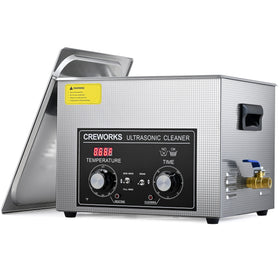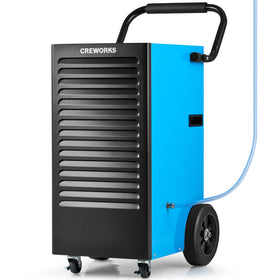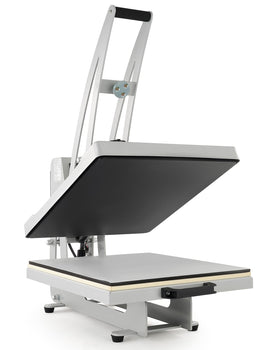With over 10000+ orders
With over 10000+ orders
Nearly half the air you're breathing on your first floor is actually coming up from your crawl space. It's what building experts call the “stack effect” - your building acts like a chimney, pulling air up from below. When that crawl space is damp, you're dealing with a whole-building issue, which is why more property managers are taking a closer look at crawl space dehumidifiers.
These aren't your standard household units. Commercial crawl spaces can release up to 18 pints of water vapor daily through a space as small as 1,000 square feet - even with a vapor barrier installed. That's like leaving four gallons of water to evaporate in your foundation every week.

Here's a fact that catches most building owners by surprise: moisture doesn't just seep in from outside. The ground beneath a typical commercial building naturally releases water vapor - even through concrete. Building scientists have measured this release at about 2-3 pints of moisture per 100 square feet daily. Do the math, and you'll see how quickly this adds up in larger spaces.
Think about this: the air in your crawl space behaves differently than the air in your living areas. It's typically cooler, which means it can hold less moisture. When warm air meets these cooler surfaces, condensation happens. This is why you might see water droplets on pipes or ducts, even on dry days.
Temperature matters more than you might think. For every 20-degree drop in temperature, air loses half its ability to hold moisture.
In a commercial crawl space that might be 15-20 degrees cooler than the rest of your building, this creates perfect conditions for moisture problems.
If you want to learn more about what are the signs that your crawl space needs a dehumidifier, click here.
Your crawl space dehumidifier needs a reliable way to dispose of the water it collects. Most units come with either gravity drainage or pump drainage systems.
For gravity drainage models, you'll need a ground-level drain that sits lower than the unit.
If you have a pump model, you have more flexibility - the drain can be positioned higher than the unit.
The drain hose typically extends 6.5 to 16.5 feet, so plan your placement accordingly.
Position your dehumidifier within 9.2 feet of a grounded, three-prong electrical outlet.
This might seem specific, but it's crucial for safe operation.
Make sure the electrical circuit you're using isn't already handling other high-power appliances - overloading the circuit could damage your unit or create safety hazards.
Start by carefully moving the dehumidifier into position using its built-in wheels and handle. Never tilt the unit more than 45 degrees during transport.
Once in place, connect the drain hose securely to the unit's drain outlet.

Before powering up your crawl space dehumidifier, perform these essential checks:
Regular checks of these elements help ensure your crawl space dehumidifier operates efficiently and safely, protecting your home from excess moisture for years to come.

Cold air tends to settle in corners and against exterior walls. This is why placement is crucial. A dehumidifier located in the wrong spot might work harder while missing problem areas entirely.
Place your crawl space dehumidifier at the center point of the crawl space whenever possible - this allows for the most even air distribution. For larger crawl spaces over 2,000 square feet, you'll want multiple units spaced evenly to ensure complete coverage.
Keep these key placement factors in mind:
This gap can protect your commercial dehumidifier from potential flooding and allows for better air intake from all directions.
One common mistake is placing the unit directly against a wall or in a corner. This severely restricts airflow and forces the dehumidifier to work harder while being less effective. Instead, keep it in open space where air can circulate freely around all sides.
For drainage, ensure the unit sits slightly tilted (about 1 inch) toward its drain line connection. This helps water flow properly through the drain line and prevents standing water in the collection tray.
it's all about matching the unit to your space. For every 500 square feet of crawl space, you'll need about 10 pints of daily moisture removal capacity. Living in places like Florida or Louisiana? You might need to double that capacity since high outdoor humidity means more moisture seeping into your crawl space.
Your crawl space dehumidifier will typically use about as much power as a small window AC unit - between 500 to 700 watts when running. In real terms, this usually adds $30-50 to your monthly electric bill. Of course, this varies depending on your local electricity rates and how often your unit needs to run to keep moisture levels in check.
Modern crawl space dehumidifiers come with built-in pump systems that do the heavy lifting for you. These pumps can actually push water uphill through a drainage hose - a crucial feature when your only drain point sits above the crawl space level. This means you have flexibility in choosing your drainage solution, whether it's running to a sump pump or connecting to your home's drain system.
Just like your car needs regular oil changes, your crawl space dehumidifier needs periodic care. Plan on basic maintenance every 3-6 months - this means checking the air filter and ensuring the drainage system flows freely. Once a year, schedule a more thorough check-up to clean the coils and verify the system is running at peak efficiency.
With proper care, expect your crawl space dehumidifier to serve you for 5-10 years or more. Commercial-grade units often last even longer. The key to maximizing lifespan? Regular maintenance and proper installation from the start. Think of it as an investment in your home's long-term health - the better you care for it, the longer it protects your home from moisture damage.

When selecting a crawl space dehumidifier, you need a unit that can handle the unique challenges of below-ground moisture. The Creworks 180 Pints Commercial Dehumidifier stands out for larger crawl spaces. It covers areas from 600 to 1600 square feet - enough for most residential and light commercial crawl spaces.
What makes this unit effective for crawl space use? Its upgraded condenser and evaporator coils remove 85 pints of water per day under standard conditions. In high-humidity crawl spaces, it can extract up to 180 pints daily at saturation. These numbers matter because crawl spaces typically face higher moisture levels than above-ground areas.
The unit's design makes it practical for crawl space installation. Its easy-to-read display panel lets you check humidity levels and adjust settings quickly during maintenance visits. You won't need to spend extra time squinting at complex controls in the dim crawl space lighting.
Remember that choosing the right size matters more in crawl spaces than in other areas. Since your crawl space dehumidifier needs to work constantly to combat ground moisture, picking a unit like the Creworks that can handle peak moisture loads helps prevent future problems.











